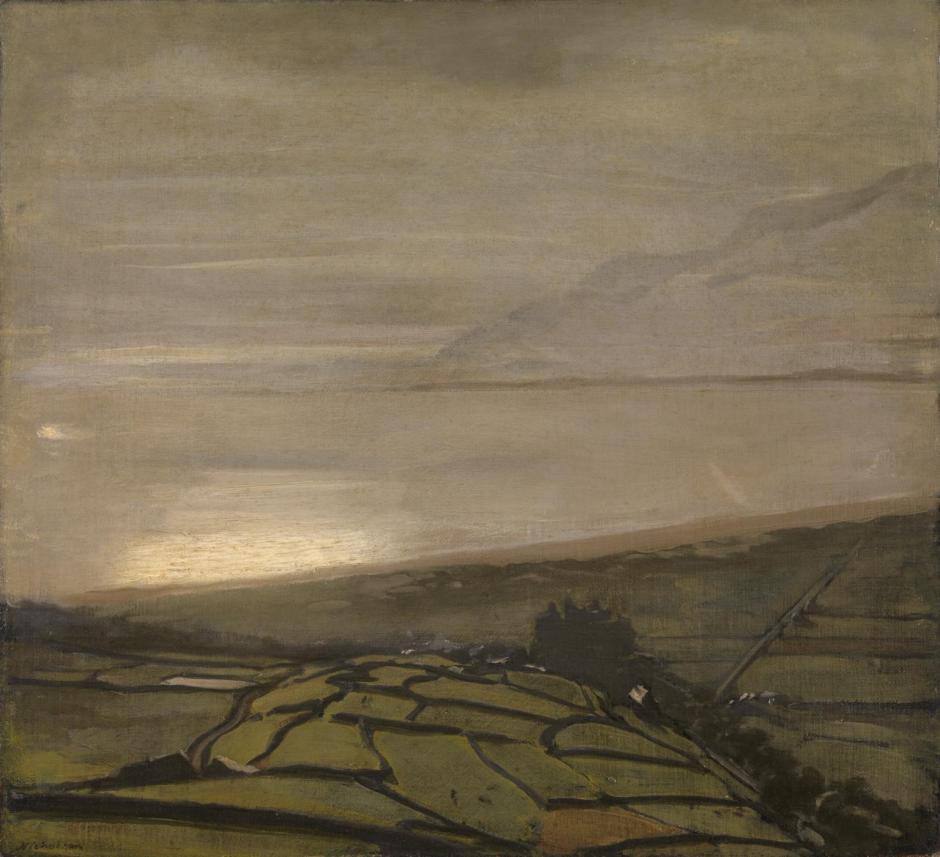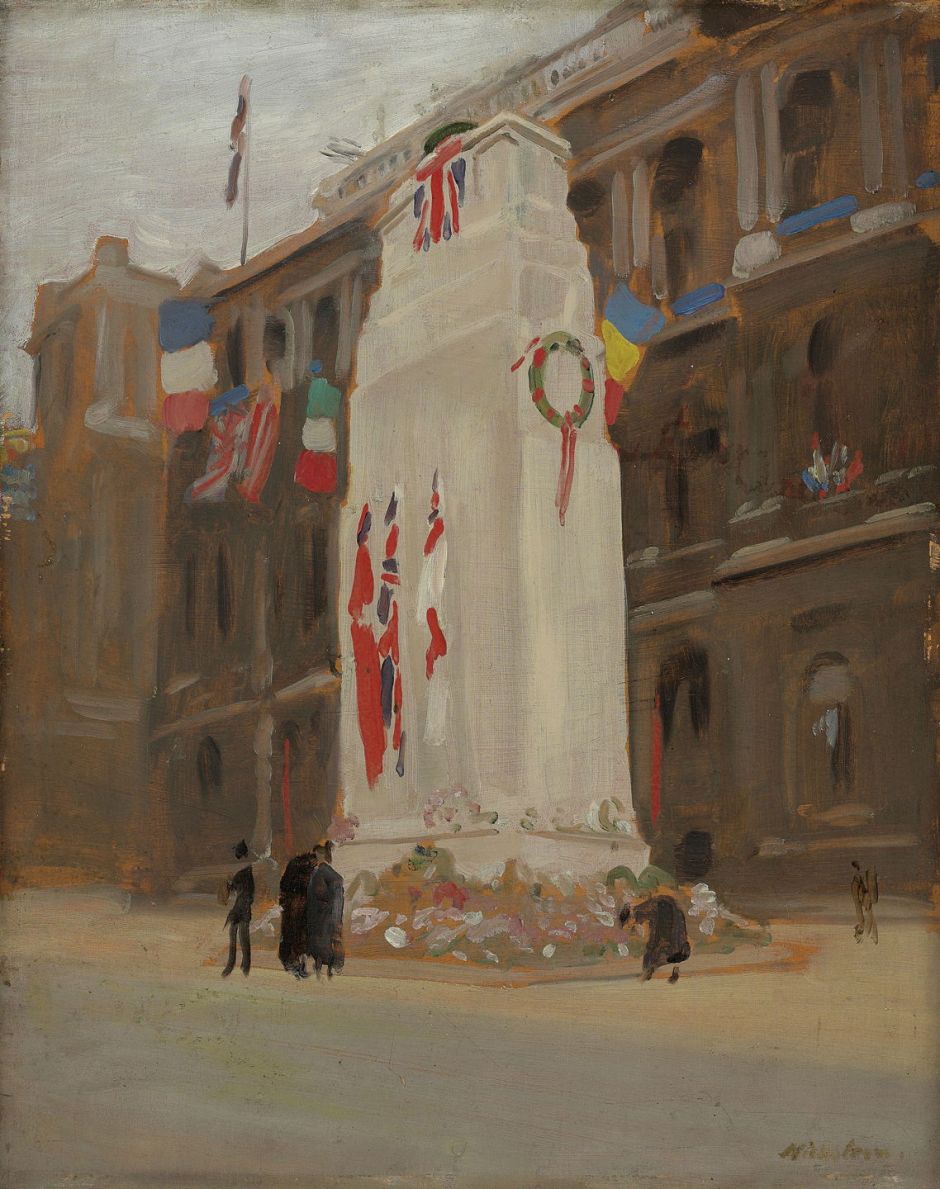Impressionist painting may have been late coming to Britain, but it also lived rather longer, extending well into the period between the wars. Although in the majority of cases, few paintings of those artists remain accessible, the national collection at the Tate Gallery has an interesting selection of the works of this week’s British Impressionist, Sir William Nicholson (1872–1949).
William Newzam Prior Nicholson was the son of an industrialist and Conservative MP who was taught to paint as a boy. He went on to Hubert von Herkomer’s school in London, and spent the winter of 1891-92 studying at the Académie Julian in Paris. He started his painting career in earnest when living in a former pub in the village of Denham in Buckinghamshire, in 1893. Initially, much of this was in poster design, in collaboration with his brother-in-law, under the alias of the Beggarstaffs. Nicholson provided illustrations for a succession of books published by William Heinemann, and later Faber & Faber.
In 1900, Whistler encouraged him to paint more. In 1909, he moved to Rottingdean, on the coast of Sussex, where he started to paint landscapes in Impressionist style, but with similar subdued colours as Whistler and others. Towards the end of the First World War he moved to Harlech, a picturesque small town on the coast of north Wales.

His view from The Hill above Harlech, painted in about 1917, shows Harlech Castle below, and looks across the broad sweep of sand in Tremadoc Bay towards the distant Lleyn Peninsula. The light is unusual, and it has been suggested that this is a nocturne, perhaps with the moon off to the left.

The Cenotaph the Morning of the Peace Procession is an interesting historical record of 1919, as well as a detailed oil sketch. The cenotaph shown here isn’t the current memorial in central London, but a temporary structure which was erected for a ‘peace celebration’, also known as a ‘victory parade’, which took place in London on 19 July 1919, following the signing of the Treaty of Versailles which formally ended the First World War.
This was designed very quickly by Sir Edwin Lutyens, approved on 7 July, and hastily constructed in wood and plaster. It was unofficially unveiled on the day before the celebration, and soon attracted the laying of wreaths by the public. Following great public demand, a permanent version was constructed to a slightly modified design the following year, and that remains the focus for all similar events in London.

He painted few figurative works, and even fewer nudes. This example from about 1921 was never exhibited in his lifetime.
In the early summer of 1935, Nicholson visited the zoologist Sir Peter Chalmers Mitchell (1864-1945) in Malaga, Spain. In just over a month, the artist painted a dozen small landscapes, which he took back to London to develop in his studio there. Among his studies and sketches were views from the hills above the city over its most famous landmark, the bull ring.

Although Nicholson knew little about bullfighting, he there met the novelist Marguerite Steen (1894-1975), and she became his companion for the remaining fifteen years of his life. She had a passionate enthusiasm for bullfights, and Nicholson found himself working up this study of the Plaza de Toros, Malaga into a major painting.

His finished painting of Plaza de Toros, Malaga (1935) shows his quite different use of colour as a result of the intense light in southern Spain. This was exhibited in London the following year.
La Malagueta, as this bull ring is known, was a lifelong inspiration for Pablo Picasso (1881-1973), who was born and brought up in the city. Unlike Picasso, though, Nicholson’s interest was more distant, in the bullring’s form and position, rather than the thrill and spectacle of bullfights.

Later in the 1930s, Nicholson visited the Atlantic coast of France, where he became fond of the port of La Rochelle. In 1938, he painted at least eight views of its harbour, including this of the Harbour in Snow, La Rochelle. Painted quickly in his room on the first floor, he used both brush and knife to apply his paint in a thin layer before shaping and scratching it.
Nicholson had two unusual accomplishments. When the Olympic Games briefly included a graphic works section, in 1928 in Amsterdam, he won the gold medal. During the 1930s, he had a number of pupils, including Winston Churchill, who acknowledged that it was Nicholson who taught him most about painting.
Late in life he moved to Blewbury, Oxfordshire, where he died on 16 May 1949.
Reference

